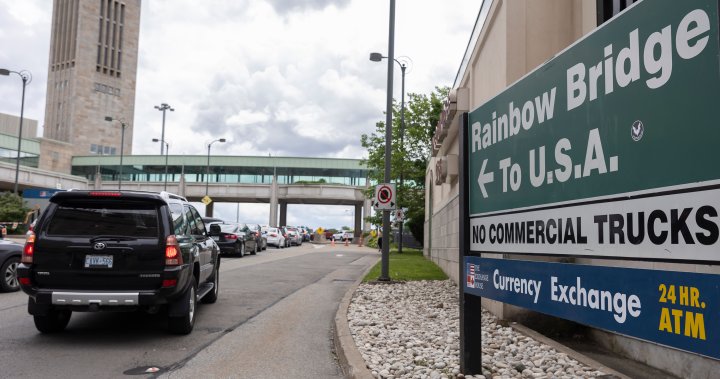Jobs
Alstom halts work on redesign hailed by city as ‘final fix’ to LRT woes | CBC News
Nearly three years after a wheel fell off one of Ottawa’s Citadis Spirit light rail cars, causing it to derail, city staff say French trainmaker Alstom has abandoned efforts to redesign the assembly that caused the failure — a project hailed by officials as a “final fix” to the problem-plagued LRT system.
Alstom and Rideau Transit Group (RTG), the consortium that built the tracks and other infrastructure, have still not agreed on the exact cause of damage that led to the derailment, nor how to stop it from happening again.
Now it seems they also no longer agree that the wheel hub assembly on the Citadis Spirits needed to be redesigned.
“Alstom has indicated that a Sustainable Solution can be achieved without a redesign and is not currently working on this initiative,” staff wrote in a report released ahead of Friday’s joint meeting of the city’s transit commission and light rail subcommittee.
“The City has formally communicated the imperative for the re-design work to re-commence.”
Coun. Glen Gower, chair of the transit commission, told CBC the city’s position is that it “cannot accept that it doesn’t need a redesign.”
Gower added that given the complex technical considerations, he’ll wait to hear from the experts.
A history of problems
Less than five years after opening, Ottawa’s Confederation Line has endured a list of trials including derailments, malfunctioning doors and brakes, and wires “melted” by freezing rain.
When recurring issues with worn bearings that connect the wheel to the axle prompted a weekslong outage last summer, engineers used the time to study the problem.
Officials from RTG and OC Transpo soon joined the mayor to herald a solution.
“At last, we are working on the root problem and not just the issues that arise from it,” Mayor Mark Sutcliffe said at the time. “With a newly designed axle, we will no longer have the problems that we’ve been experiencing so far.”
But it seems that agreement was short-lived.
Despite multiple assurances from those in charge of keeping passengers safe, the establishment of a root cause was also not imminent.
This latest report suggests that RTG and Alstom have not put “commercial interests” aside, as OC Transpo head Renée Amilcar asked them to do in the fall.
“It is imperative that RTG works with its track and vehicle teams to reach agreement on the corrective action plan that will ensure the sustainability of the railway,” the report states.
While all agree that the lateral force exerted on the wheels as the trains round the line’s sharpest curves is the source of the problem, the central question remains: Does fixing it require redesigning the train, changing the track, or both?
Track replacement recommended
As experts weigh permanent solutions, RTG has rolled out a number of fixes to ensure the train system’s safety. Those have included increasing maintenance, lowering train speeds, adjusting restraining rails, lubricating rails and pinning a restraining nut that was loosening prematurely.
WATCH | The ‘complex phenomena’ observed during LRT derailments, according to train maker
During a meeting of Ottawa’s transit commission Thursday, train maker Alstom showed this graphic video explainer to demonstrate the sequence of events it says is plaguing the city’s light rail system.
These measures have staved off another derailment, though OC Transpo’s LRT problems have not completely ended. The latest city report suggests speed restrictions and guidelines for replacing parts could be loosened.
Meanwhile, OC Transpo’s partners have continued investigating a more permanent solution, producing a number of reports that have not yet been made public.
One report by Alstom pointed to its new restraining nuts as a key piece of the ultimate solution, but also suggested the track infrastructure near a number of problem curves should be swapped out for a higher-grade rail.
Just last month, the National Research Council (NRC) backed the suggestion of a rail replacement after NRC investigators travelled to Le Creusot, France, where Alstom’s research facility is based.
Gower was quick to note the NRC report is “not prescriptive” and won’t necessarily be followed.
“Everybody is always looking for the root cause and the solution, but there’s a spectrum of measures and a spectrum of opinions,” he said.
Both RTG and the city hired independent engineering consultants to review all the findings.
Costs continue to rise
While the city pays for its own reports, the cost of other work is borne by RTG or its subcontractor Alstom. That’s true of any redesign.
If a major rail fix can’t be achieved in the hours allotted for maintenance each night, it will require another costly and frustrating shutdown — and open OC Transpo up to more public criticism.
WATCH | What would ripping up the track look like?
Rail transport expert Gordon Lovegrove wonders if or when LRT stakeholders will turn to a more extreme solution that’s been floated for years: ripping up the track.
Gower said the LRT contracts do a good job of insulating the city from financial liability, and believes the costs for consultants’ fees are justifiable given the importance of ensuring passenger safety and renewing trust in the system.
“When you’re looking at the issues that we’ve had with this system, if there need to be investments made and costs incurred to make sure that these ongoing problems get fixed, that’s money that needs to be spent,” he said.
Gower said OC Transpo tries to schedule maintenance disruptions for low-ridership periods such as the summer months.

One partial shutdown is already set for October when RTG aims to grind down tracks to adjust the problematic alignment.
If OC Transpo and its partners decide to revive the design of a new wheel-hub assembly, it will likely be years before that fix is in place — a potentially problematic timeline given that the province has said it won’t pledge any funding for Stage 3 LRT expansion until these issues are solved.
Ottawa Morning6:48Has the ‘final fix’ to LRT woes been found yet?
Nearly three years after an Ottawa light-rail train derailed, the city and its contractors have still not settled on a root cause. So what does that mean for a possible solution?












